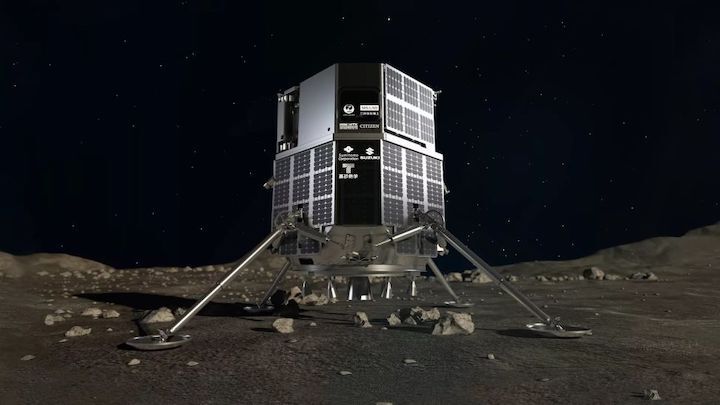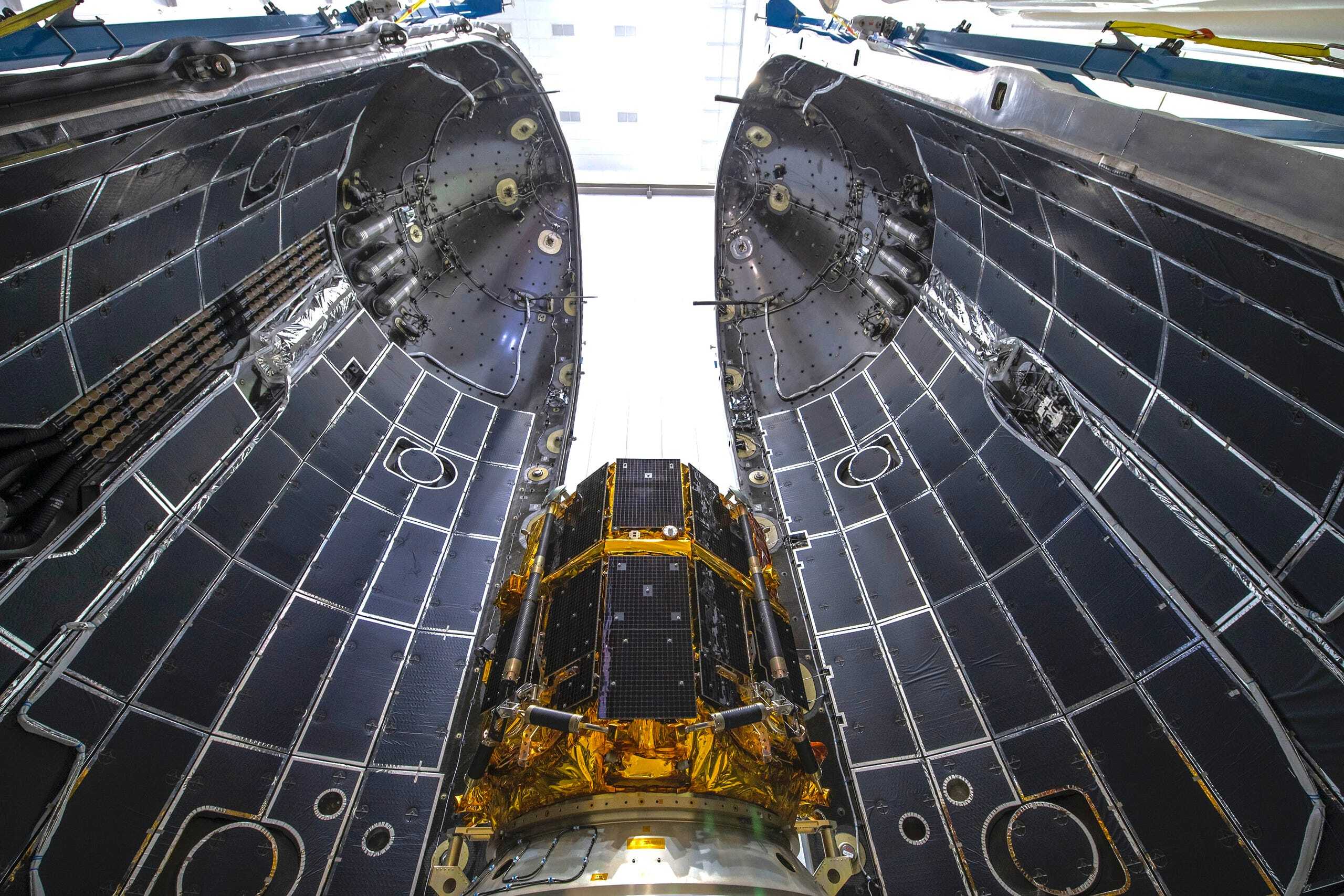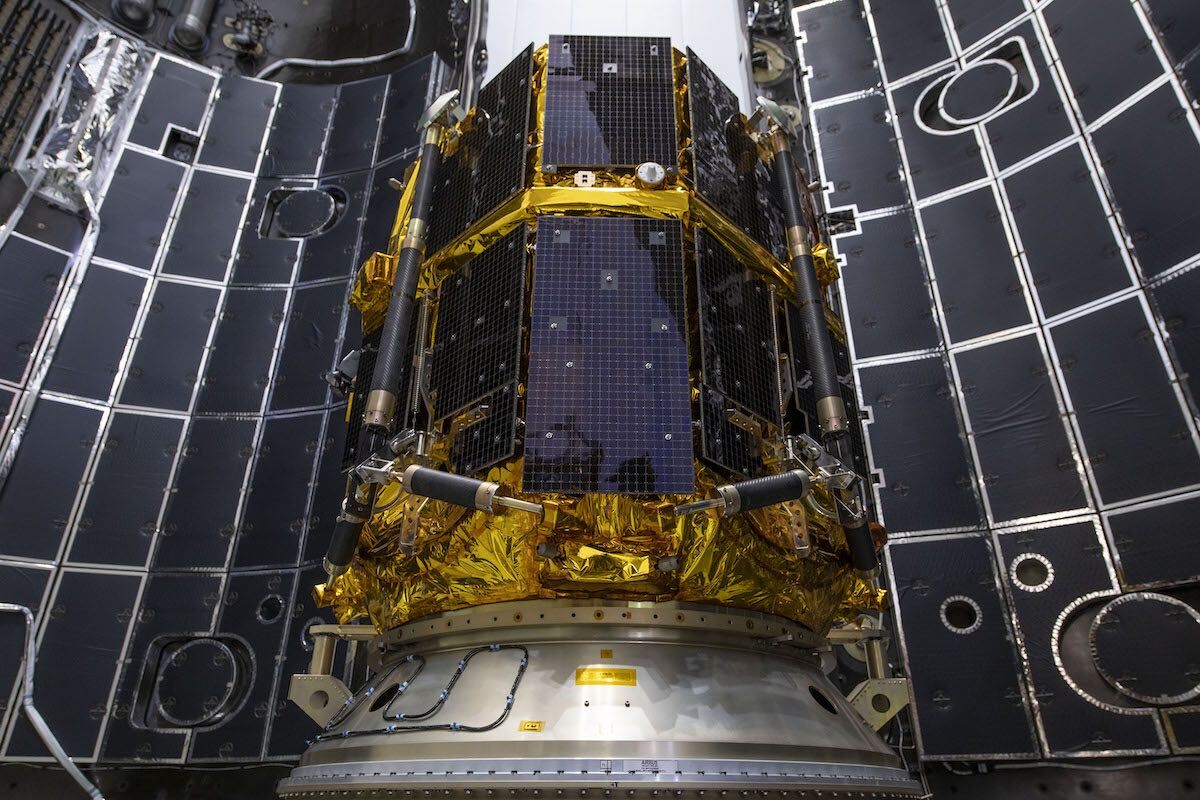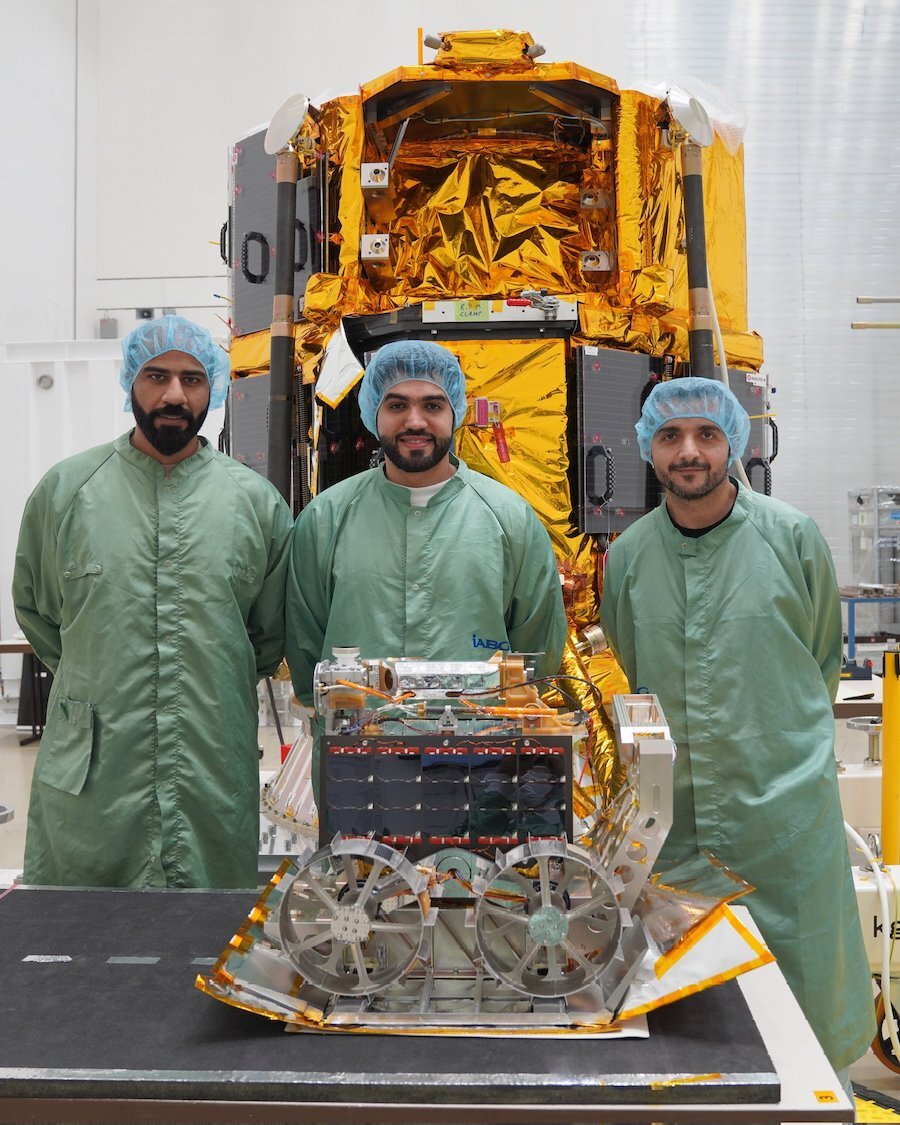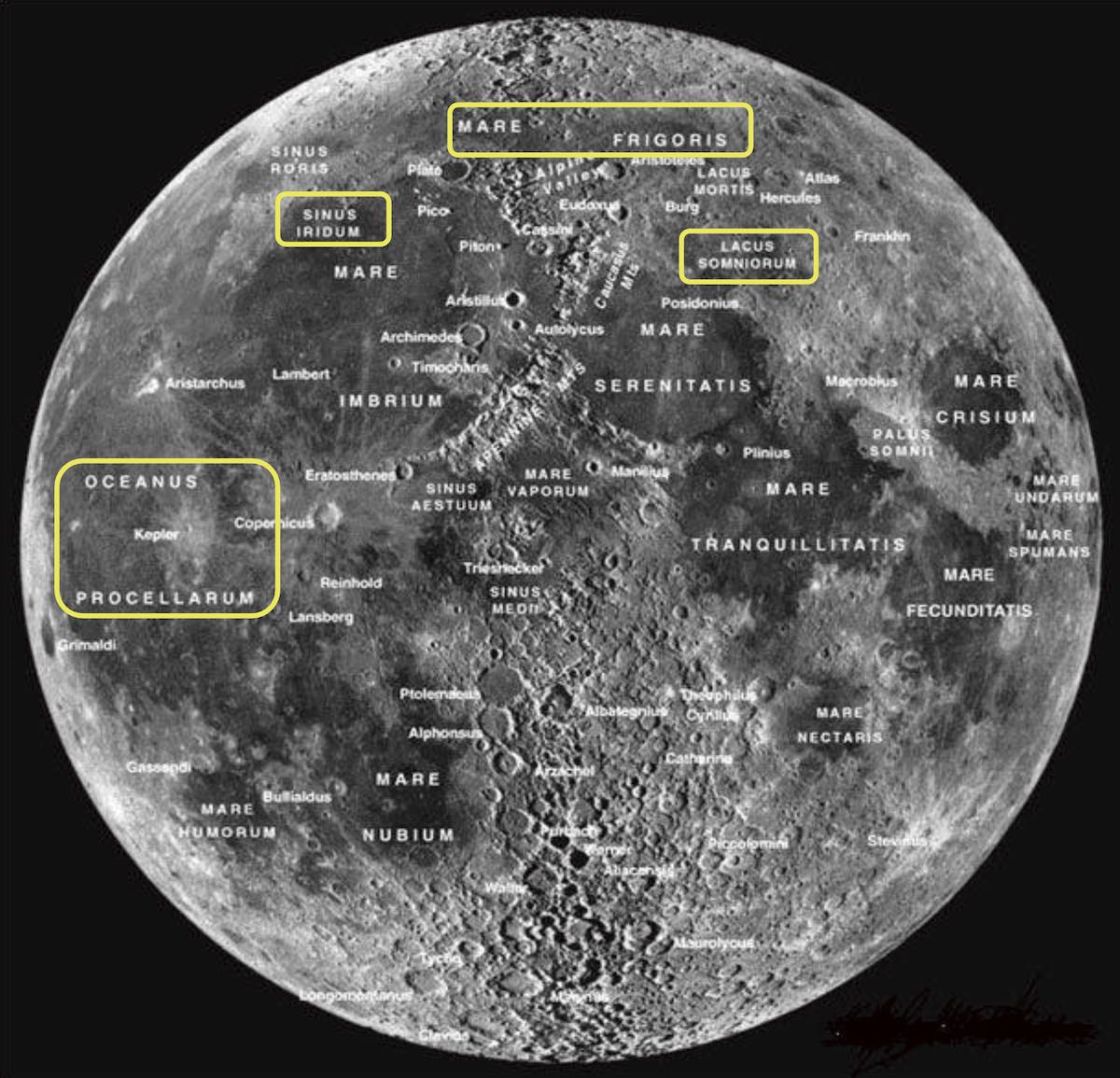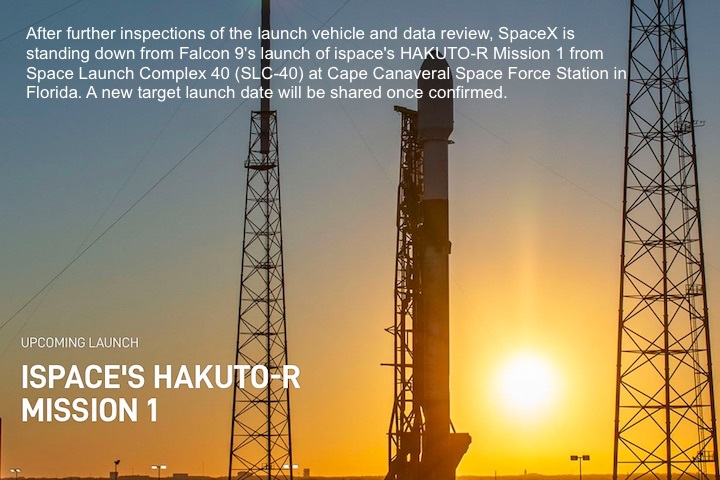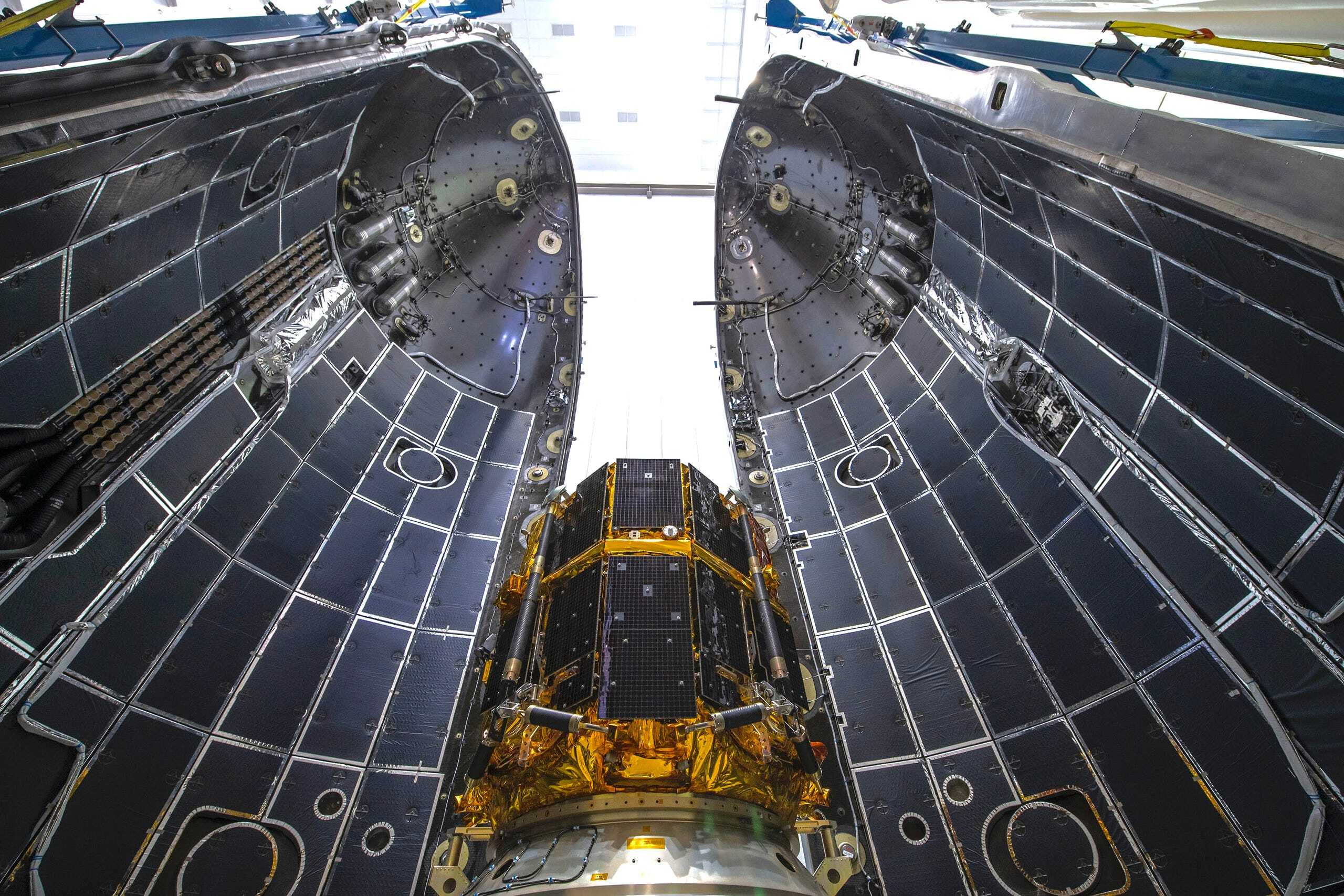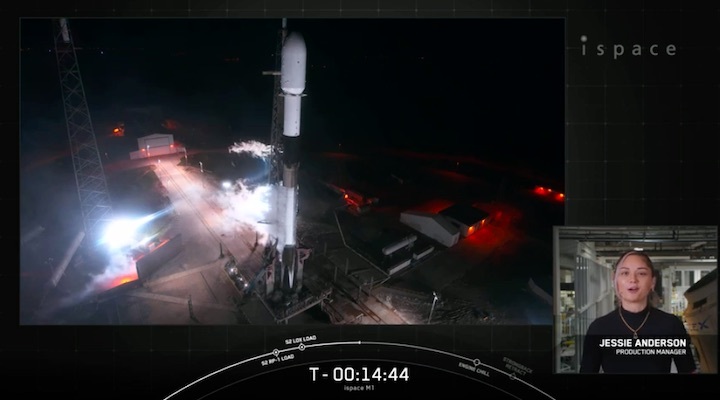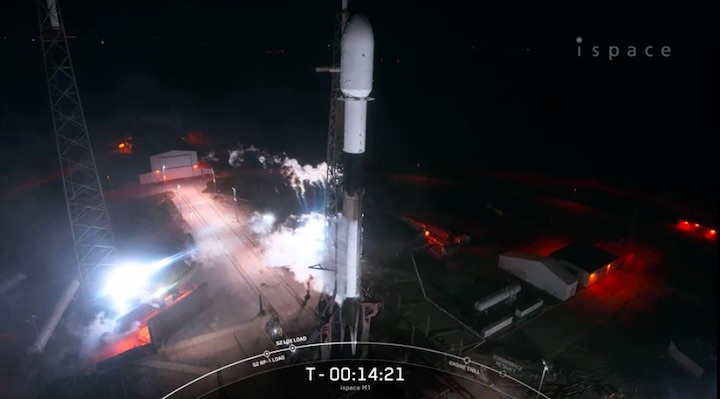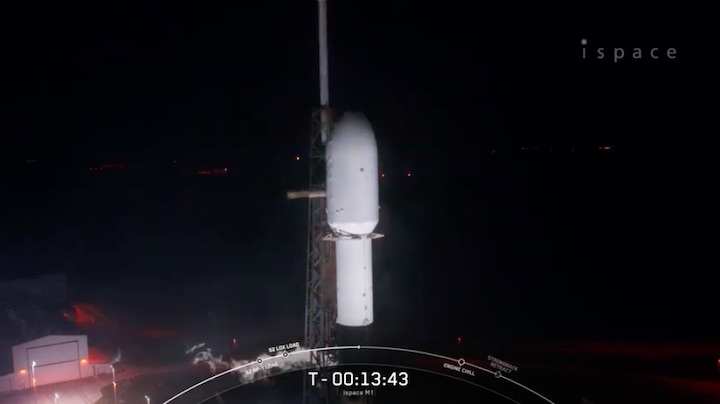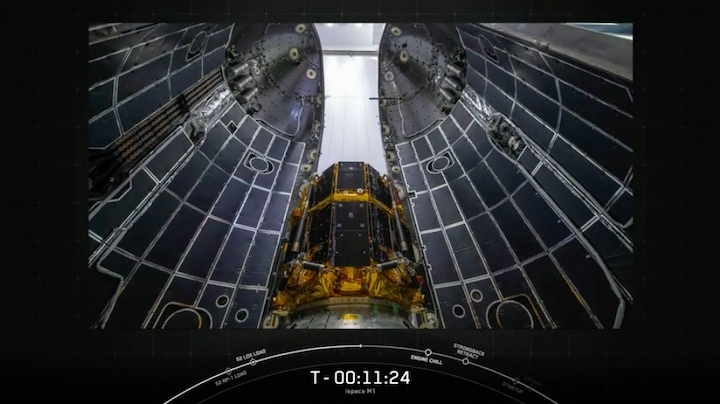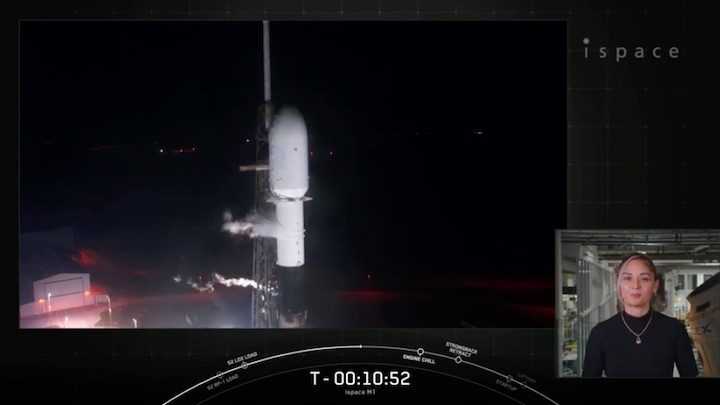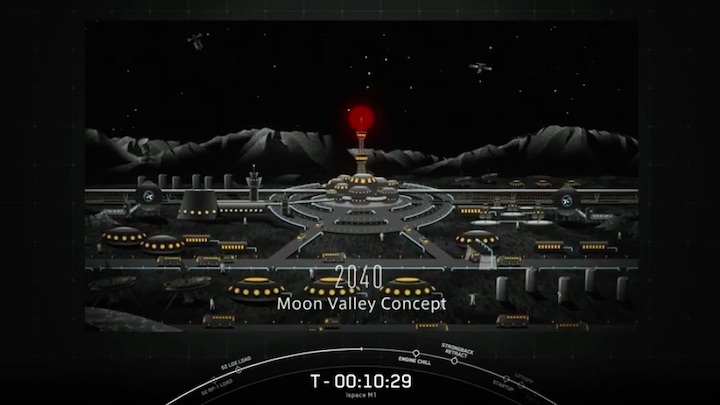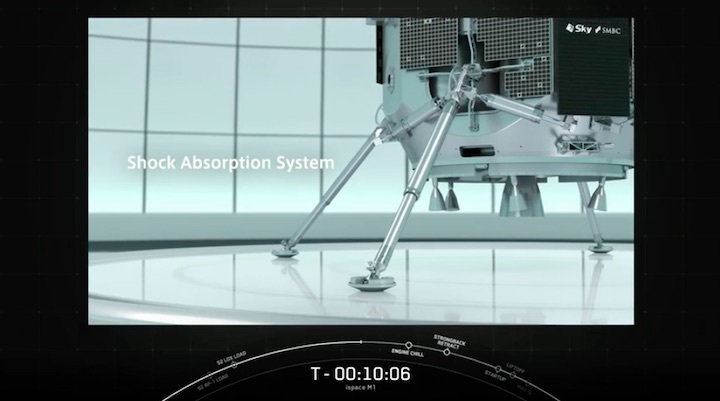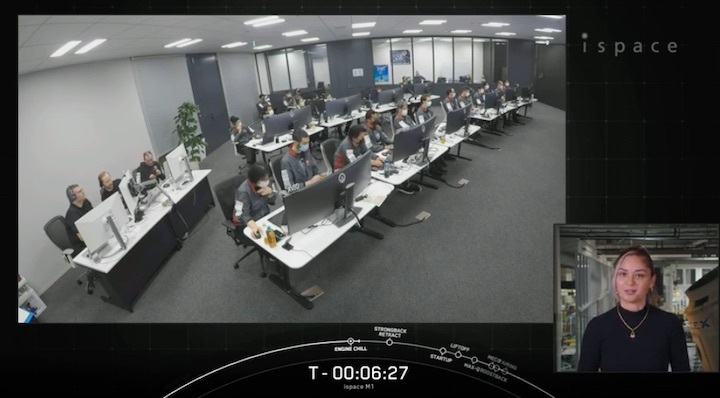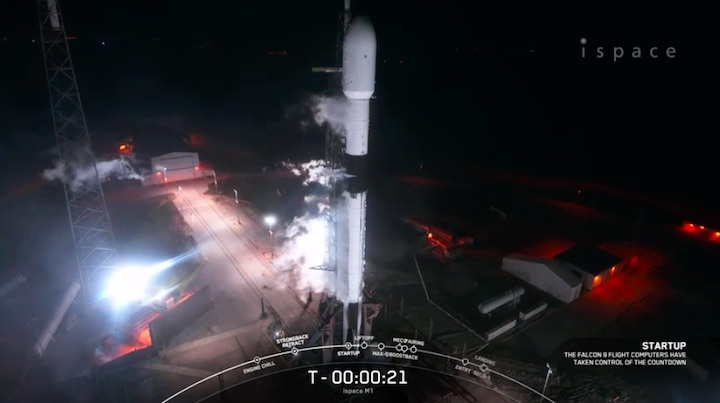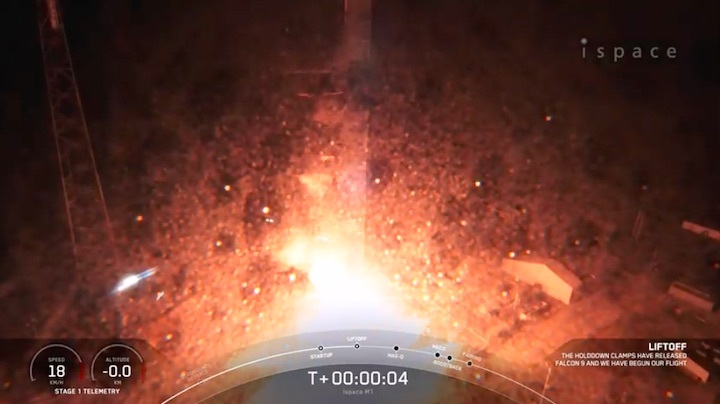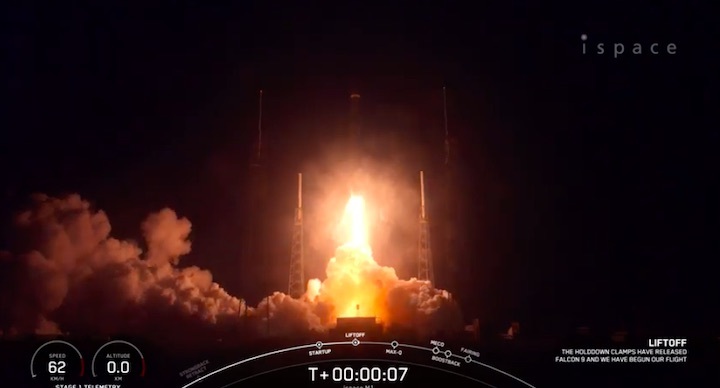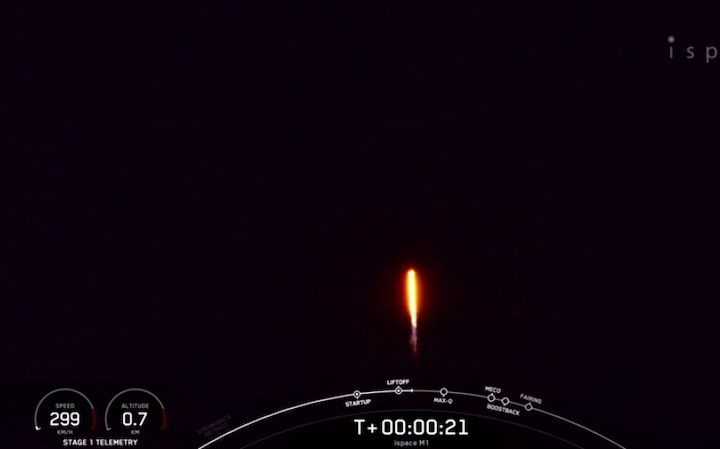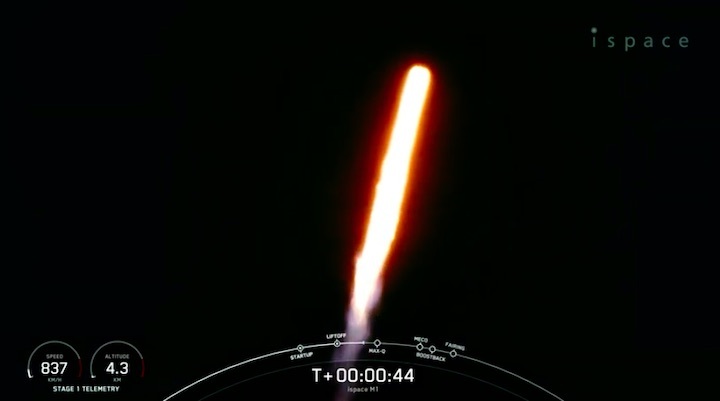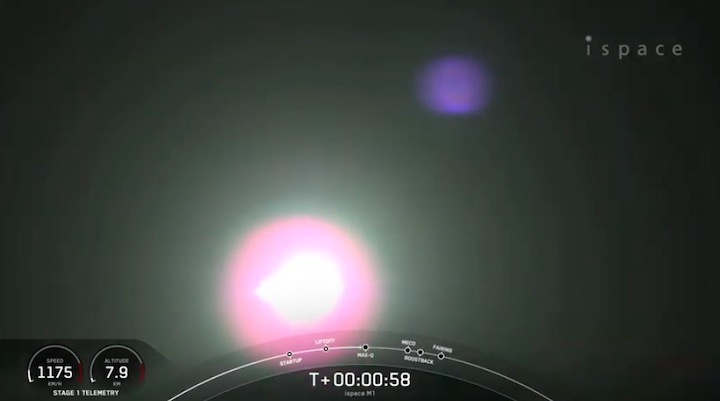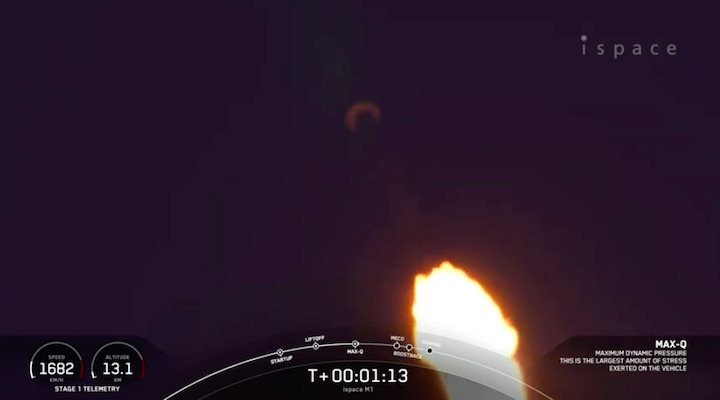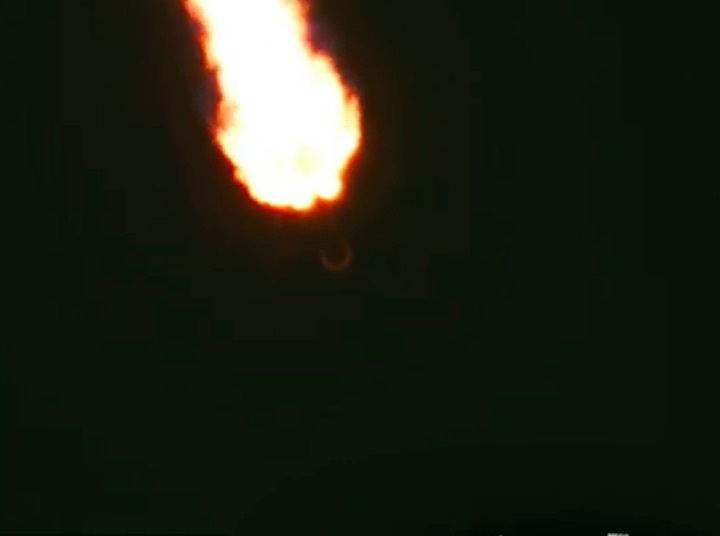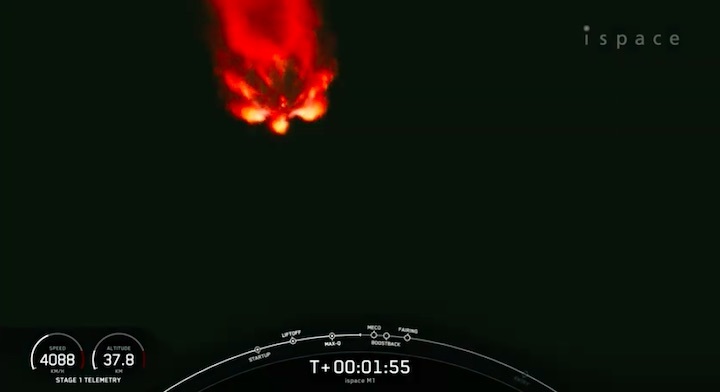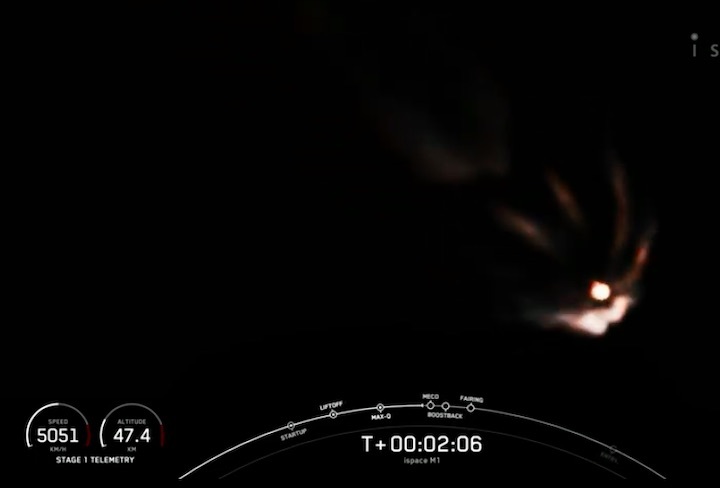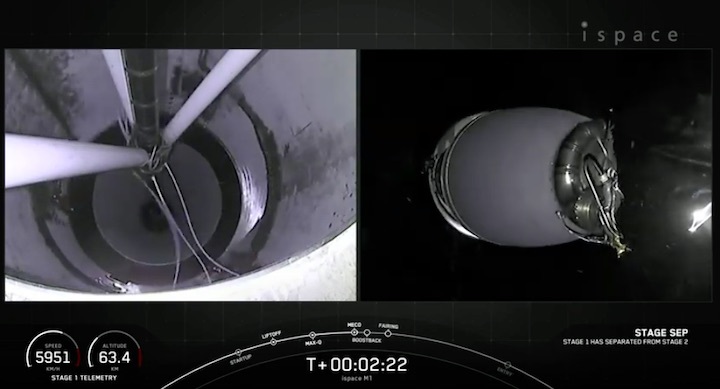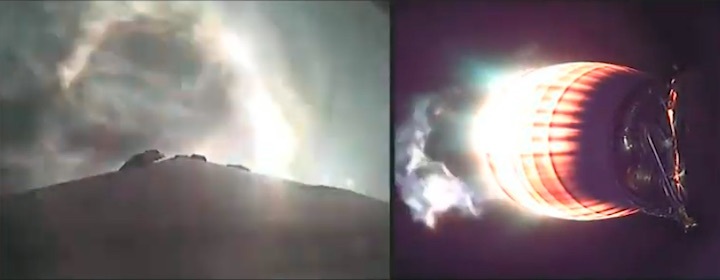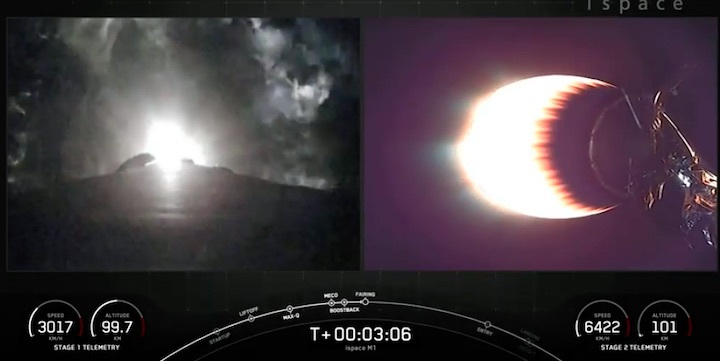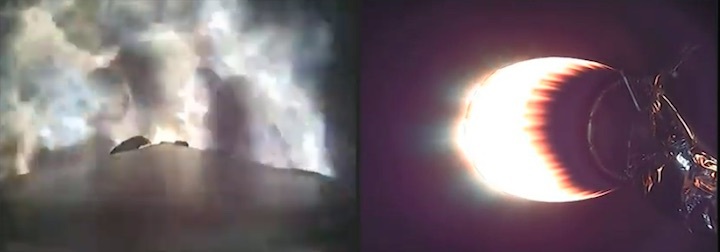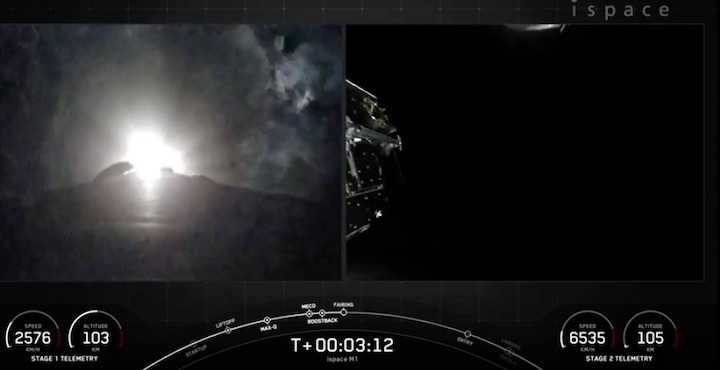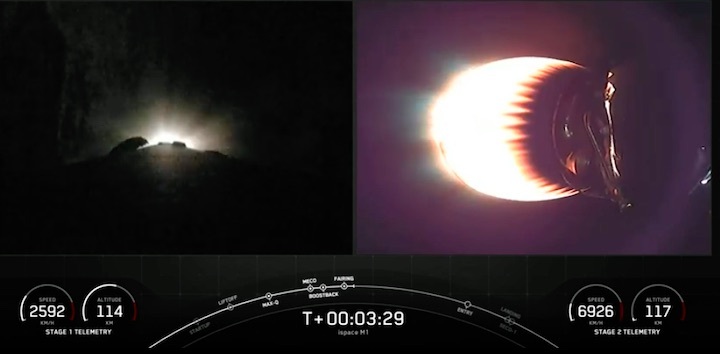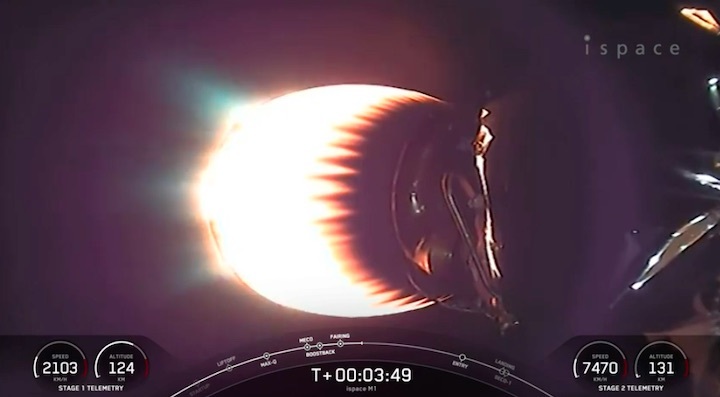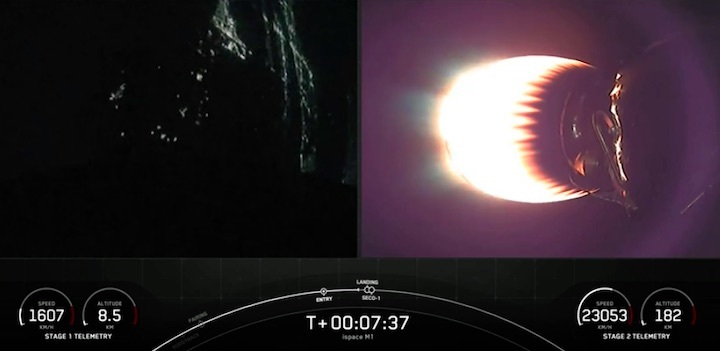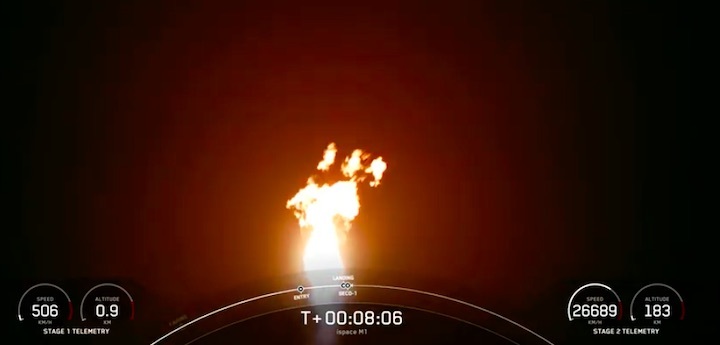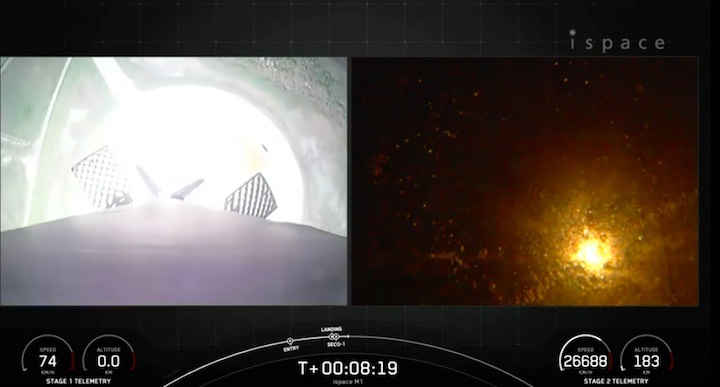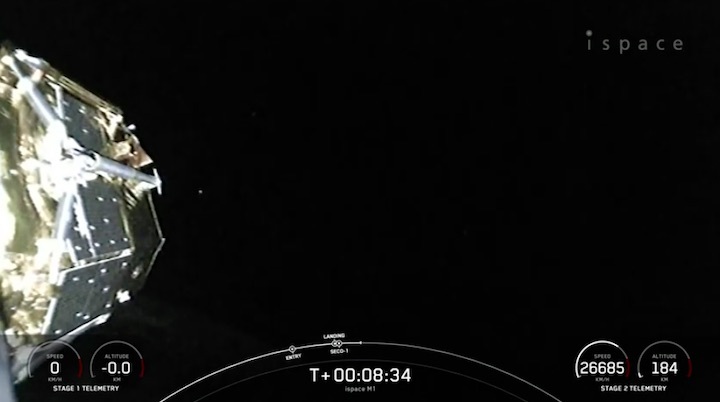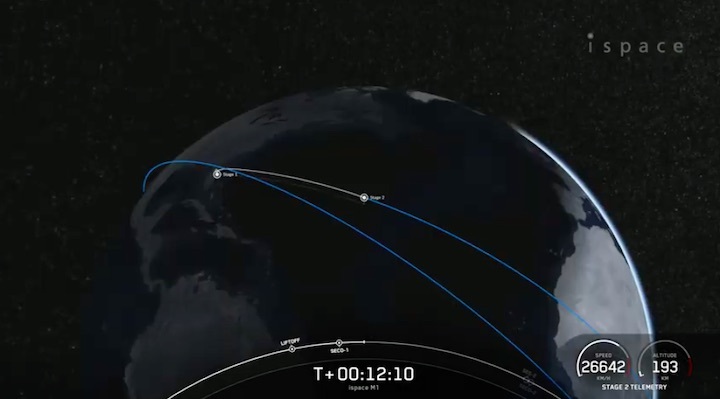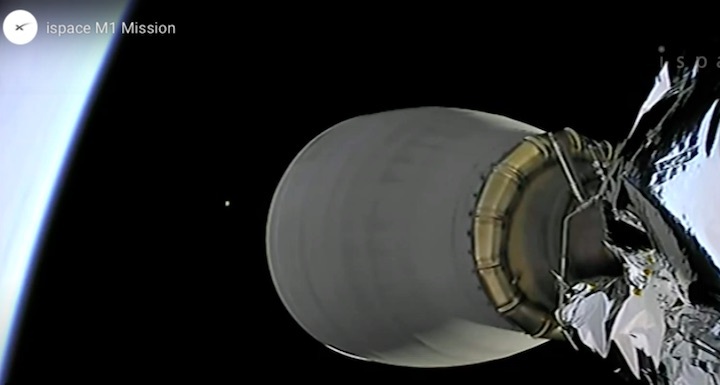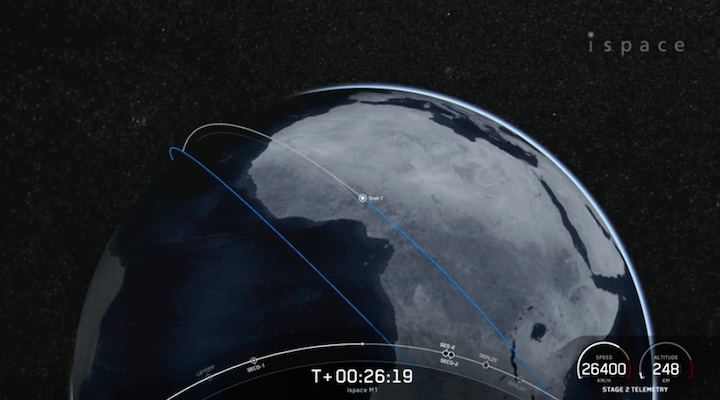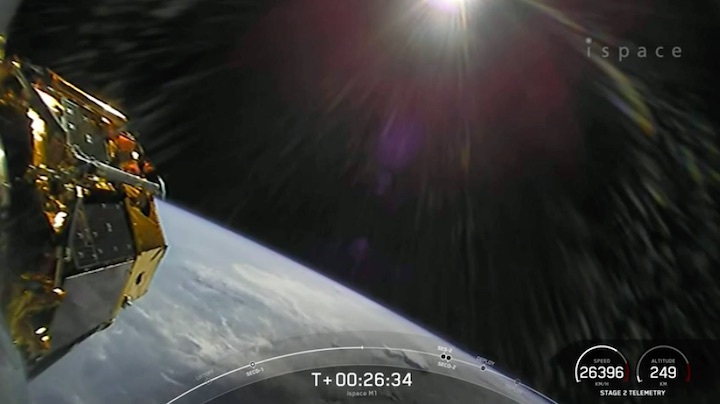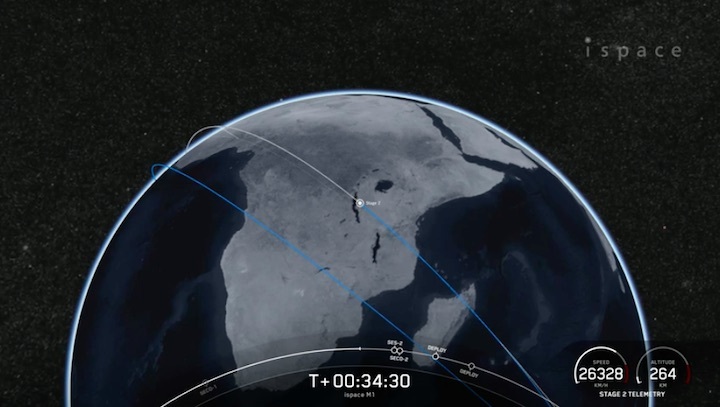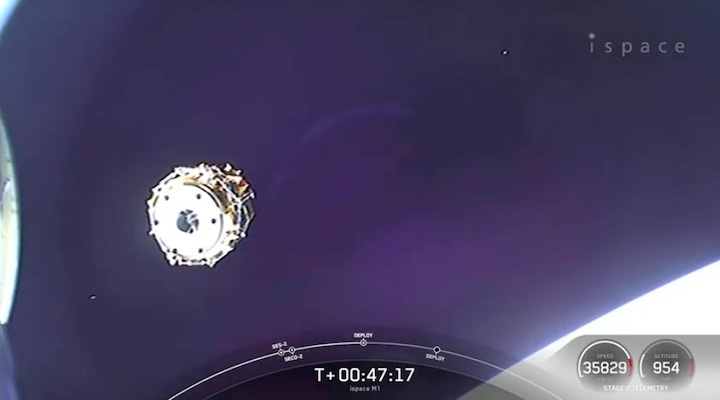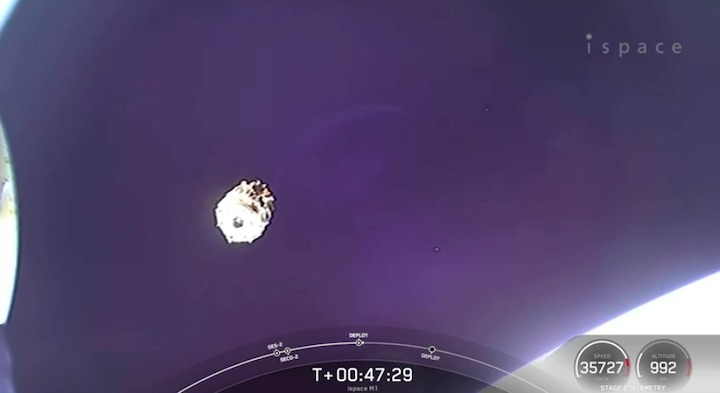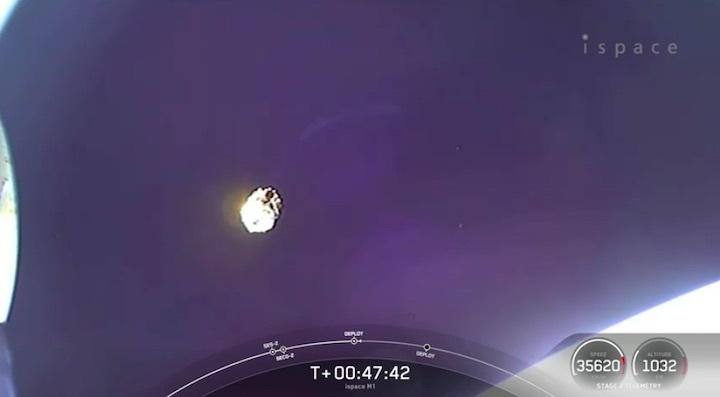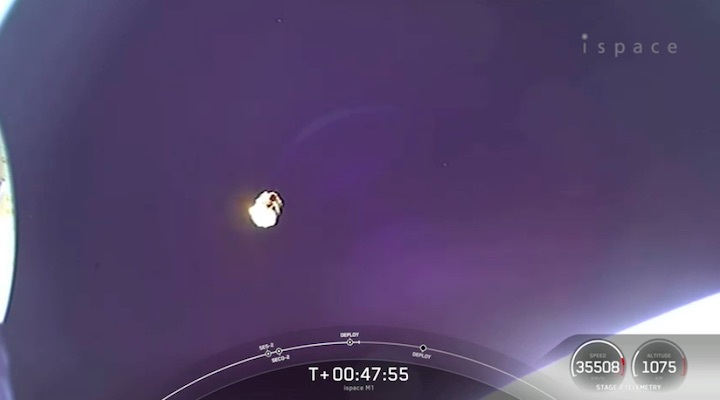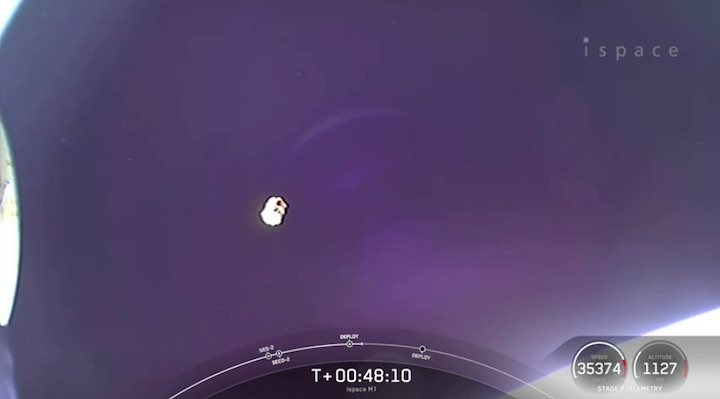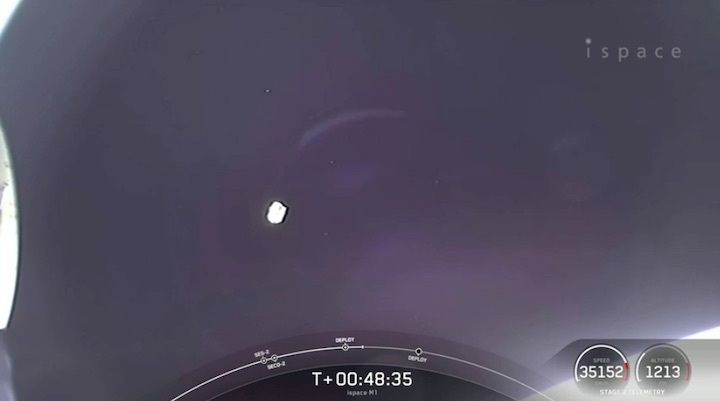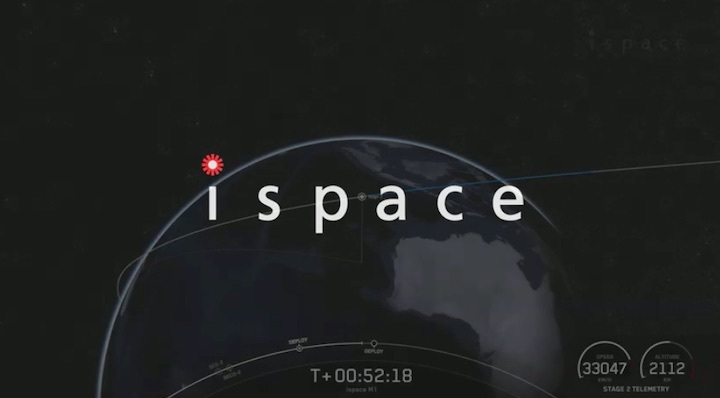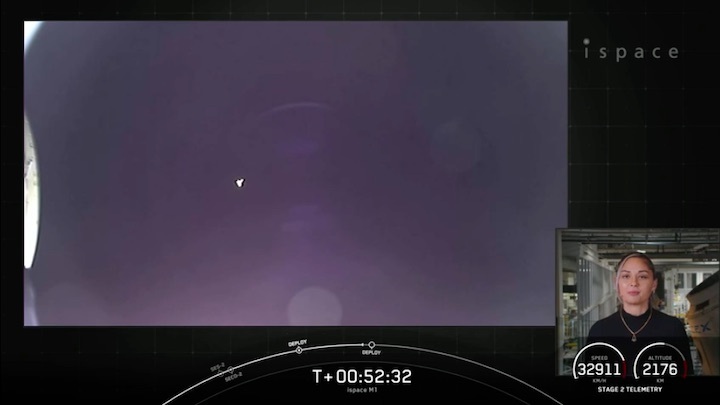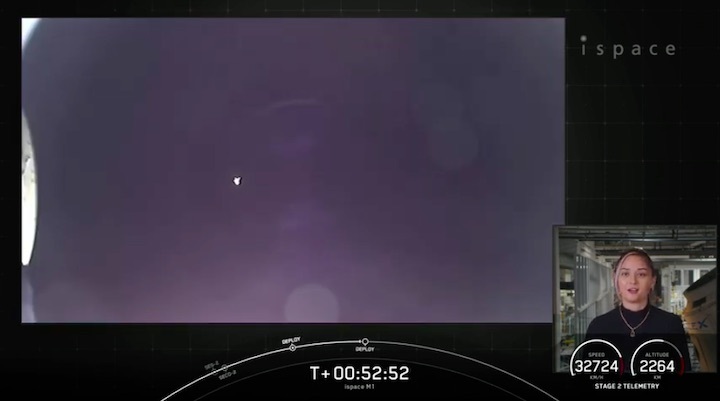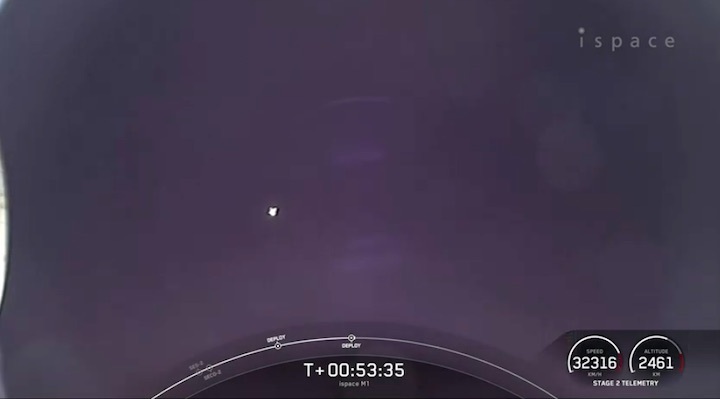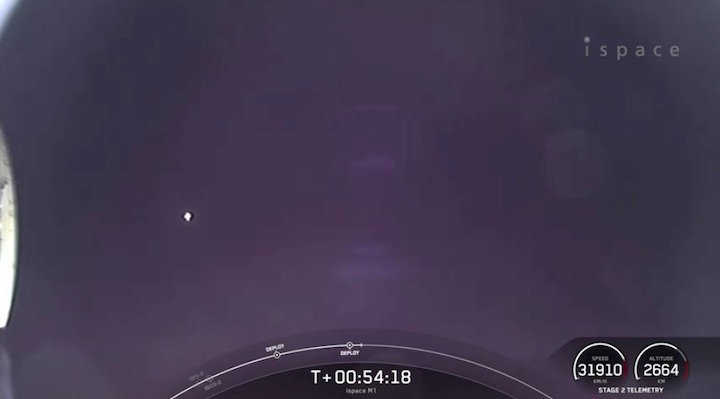14.10.2022
ispace Announces HAKUTO-R Mission 1 Launch Window for November 9 – 15, 2022
TOKYO
—ispace, inc. (ispace), a global lunar exploration company with its headquarters in Japan and regional offices in the United States and Europe, announced today that it currently plans to launch its Mission1 (M1) lunar lander, part of the HAKUTO-R program, in a target window of November 9 – 15, 2022 at the earliest.
The launch is set to occur on a SpaceX Falcon 9 rocket from Cape Canaveral, Fla. Upon its deployment from the rocket, the M1 lander will then carry multiple commercial and government payloads including two rovers to the surface of the Moon.
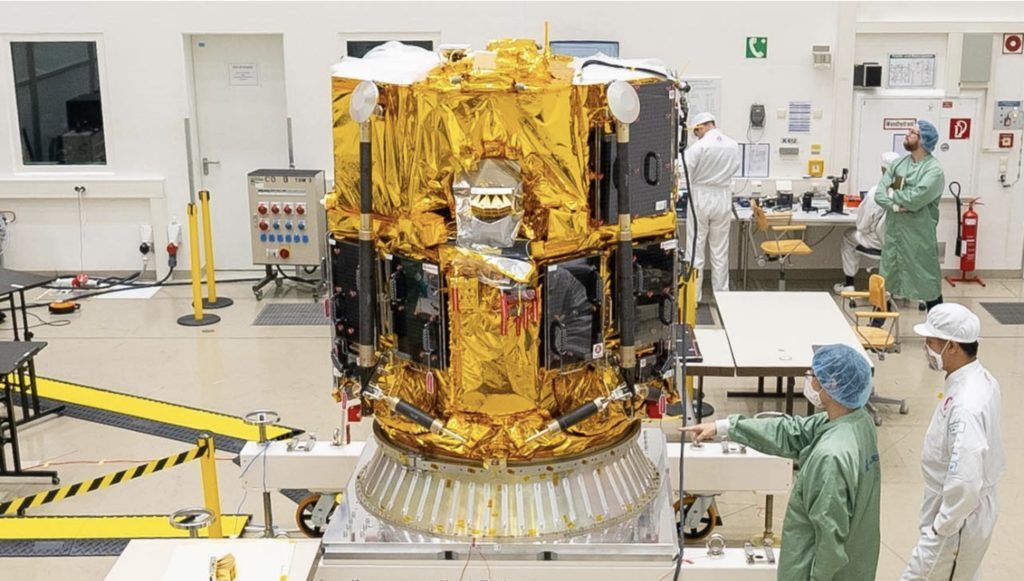
The assembled M1 flight model at the IABG Space Test Centre.
“When we participated in the Google Lunar XPRIZE we had about 20 employees, but now we’ve grown to more than 200 in Japan, the United States and Europe, each working every day with the ispace vision to achieve success. We are focused on each of our missions, but now that the launch window has been set for M1 we are ready for the challenge along with our HAKUTO-R partners,” said Takeshi Hakamada, Founder, Representative Director, and CEO of ispace. “For me this is a milestone on the road to realizing our vision, but I am already proud of our results. I look forward to watching the launch alongside all of our employees and those who have supported us.”
In addition to the launch window announcement, ispace released the following updates:
● As of September 2022, the final functional testing of the flight model at the IABG mbH Space Centre in Germany has been completed. The lander is now being prepared for transport to the launch site in Florida.
● In August 2022, ispace welcomed its 200th The total number of employees across its three offices in Japan, Luxembourg, and the United States now exceeds 200.
● After launch, M1 will be operated from the HAKUTO-R Mission Control Center (MCC) located in Tokyo’s central business district, Nihonbashi. The MCC will monitor the lander’s attitude, temperature, and other conditions, send commands and data to the lander, and receive images and video data during transit to the Moon as well as from the lunar surface.
● M1 will utilize a ground station network of the European Space Agency (ESA). The ESA’s Tracking Station Network (ESTRACK) is operated from the European Space Operations Centre (ESOC) in Darmstadt, Germany. M1 will use five of the ESTRACK network’s antennas across three continents, located in Kourou (French Guiana), New Norcia (Western Australia), Cebreros (Spain), Malargüe (Argentina) and Goonhilly (UK).
Future Mission Updates
Mission 2 planning is currently under way. Specific details of M2 payloads will be released at a later date.
In July 2022, NASA awarded Team Draper, which includes ispace subsidiary, ispace technologies U.S., inc. (ispace US), $73 million to deliver payloads including two communication relay satellites to lunar orbit as well as a suite of scientific experiments to the lunar surface. In addition to the NASA CLPS award, ispace US expects to carry additional commercial payloads on M3 to supplement the total award. ispace is in active negotiations to fill M3 orders and beyond.
About ispace, inc. (https://ispace-inc.com/)
ispace, a global lunar resource development company with the vision, “Expand our Planet. Expand our Future.”, specializes in designing and building lunar landers and rovers. ispace aims to extend the sphere of human life into space and create a sustainable world by providing high-frequency, low-cost transportation services to the Moon. The company has offices in Japan, Luxembourg, and the United States with more than 200 employees worldwide. ispace technologies U.S., inc. is part of a team led by Draper, which was awarded a NASA Commercial Lunar Payload Services (CLPS) Program contract to land on the far side of the Moon by 2025 (as of September 2022). Both ispace, and ispace EUROPE S.A. (ispace EU) were awarded contracts to collect and transfer ownership of lunar regolith to NASA, and ispace EU was selected by ESA to be part of the Science Team for PROSPECT, a program which seeks to extract water on the Moon.
Established in 2010, ispace operated “HAKUTO” which was one of five finalist teams in the Google Lunar XPRIZE race. The company’s first mission as part of its HAKUTO-R lunar exploration program is currently planned for as early as November 2022 and is expected to launch from the United States on a SpaceX Falcon 9 rocket. ispace has also launched a lunar data business concept to support new customers as a gateway to conduct business on the Moon.
Quelle: ispace
----
Update: 20.10.2022
.
Ispace lander set November launch dates
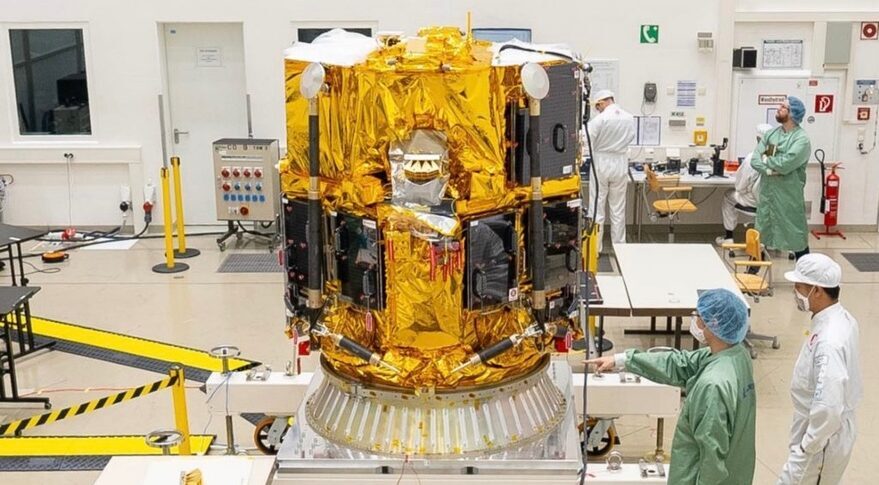
The HAKUTO-R M1 lander, built by ispace, undergoes final preparations in Germany for shipment to Cape Canaveral for a Falcon 9 launch Nov. 9-15. Credit: ispace
WASHINGTON — NASA’s Artemis 1 mission and a Japanese lander are set to launch to the moon from Florida within days of each other in November.
NASA announced Oct. 12 that it has scheduled the launch of the Artemis 1 mission for Nov. 14 from the Kennedy Space Center. The launch would take place during a 69-minute window that opens at 12:07 a.m. Eastern. Backup launch windows are available Nov. 16 at 1:04 a.m. Eastern and Nov. 19 at 1:45 a.m. Eastern, each two hours long.
The agency said that inspections of the Space Launch System rocket and Orion spacecraft after it rolled back to the Vehicle Assembly Building Sept. 27 found “minimal work” needed to prepare them for another launch attempt. That work includes repairing minor damage to the rocket’s thermal protection system from earlier launch attempts and tests, as well as replacing or recharging batteries for the rocket’s flight termination system. NASA expects to have the vehicle ready to roll back to Launch Complex 39B as soon as Nov. 4.
NASA rolled the rocket back to the VAB to protect it from Hurricane Ian as the storm cut across Florida. That ruled out launch opportunities in late September and early October, and the rollback meant NASA could not try again during a launch period open in the latter half of October.
The new launch opportunities are near the start of the following launch period. NASA is pressing ahead with those opportunities despite them being at night. Agency officials earlier suggested they preferred to launch during the day for improved tracking of the SLS on its inaugural flight, but that would have required waiting until at least Nov. 22, in the latter half of the launch period.
The new launch date for Artemis 1 means it is now scheduled for launch within days of a commercial lunar lander mission. Japanese company ispace announced Oct. 12 that it plans to launch its first HAKUTO-R lander on a Falcon 9 between Nov. 9 and 15 from Cape Canaveral.
The M1 lander completed testing last month at a facility in Germany and it being prepared for shipment to the launch site. The lander is carrying a variety of payloads, including a small lunar rover called Rashid developed by the United Arab Emirates.
“For me this is a milestone on the road to realizing our vision, but I am already proud of our results,” Takeshi Hakamada, chief executive of ispace, said in a statement. “I look forward to watching the launch alongside all of our employees and those who have supported us.”
That schedule puts ispace ahead of two American companies also preparing lunar landers for launch. Both Astrobotic and Intuitive Machines had planned to launch their first lander missions before the end of the year, carrying payloads that included those provided by NASA though its Commercial Lunar Payload Services (CLPS) program. However, Intuitive Machines said over the summer that the Falcon 9 launch of its IM-1 mission would slip to early 2023.
Astrobotic, flying on the inaugural mission of United Launch Alliance’s Vulcan Centaur, had been holding a 2022 launch until Oct. 10, when ULA announced it was delaying the launch to the first quarter of 2023 to give Astrobotic more time to complete its lander. It was not clear that Vulcan itself would be ready to launch this year because of delays in the delivery of the BE-4 engines that power its first stage.
In an Oct. 10 statement, John Thornton, chief executive of Astrobotic, said his company would release more details about its launch plans in the near future, but noted the lander has recently returned to the company’s Pittsburgh headquarters after completing pressure testing of its propulsion system.
“We are now proceeding with final spacecraft assembly which includes installation of the solar panel along with avionics, sensors, communications equipment and payloads, which are already tested and integrated with their corresponding decks,” he said. “As Peregrine begins its journey to the Moon in early 2023, it will be an incredible accomplishment for Astrobotic, the city of Pittsburgh, and the space industry as a whole.”
Tokyo-based ispace is not directly a part of the CLPS program. However, its U.S. office is part of a team led by Draper that won a CLPS award in July for a lander mission to the far side of the moon scheduled for launch in 2025.
Quelle: SN
----
Update: 2.11.2022
.
ispace HAKUTO-R Lunar Lander Launch Now Scheduled for November 22
With two Canadian payloads onboard, the ispace HAKUTO-R Mission 1 (M1) lunar lander has been shipped to Cape Canaveral, Florida for a November 22 launch date.
The launch of the first commercial lunar lander mission to attempt a landing on the Moon was originally scheduled between November 9 -15. However, ispace stated that after consulting with SpaceX, the new tentative launch date would be moved to November 22 because it “allows for best preparation for the mission when considering the fuel-loading schedule for the lander and launch date availability.” SpaceX has a busy schedule at the Cape and NASA still has the Artemis 1 launch scheduled for November 14.
The two Canadian payloads are from Canadensys Aerospace and Mission Control Space Services. Canadensys is providing a multi-camera vision system while Mission Control is providing a first of its kind AI-based demonstration flight computer.
The HAKUTO-R lunar Lander went through “final testing including vibration tests, thermal vacuum tests, mass property and functional testing” and other testing at the IABG GmbH Space Centre near Munich, Germany before it was packed into a cargo plane the Munich International Airport for its late October flight to Cape Canaveral, Florida.
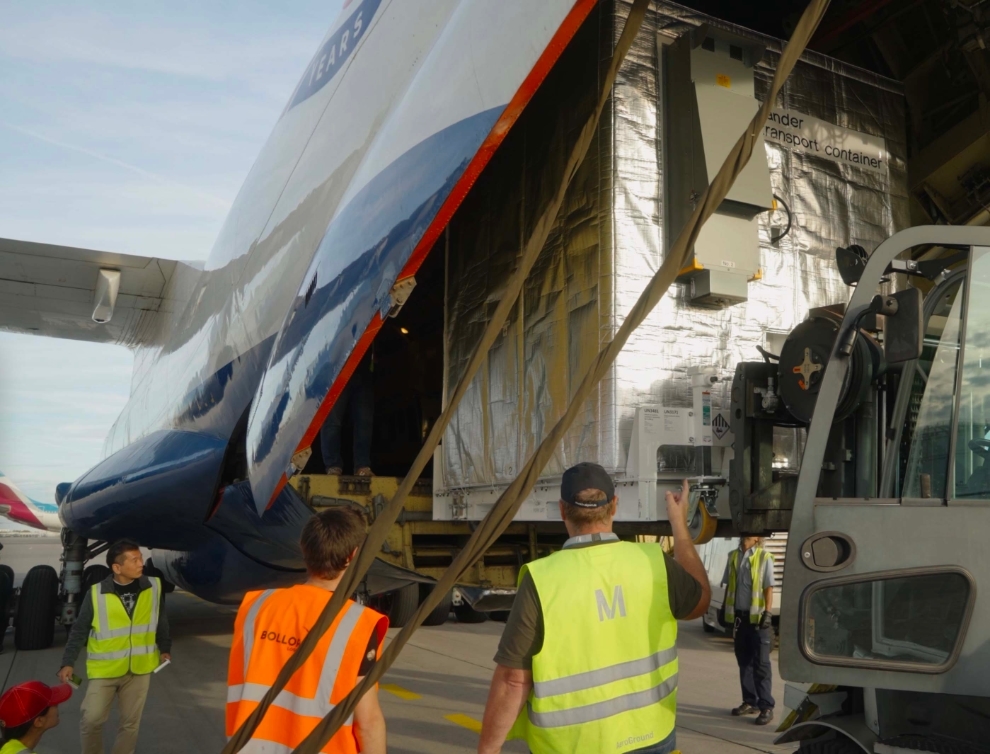
Once launched, the M1 “will be operated from the HAKUTO-R Mission Control Center (MCC) located in Tokyo’s central business district, Nihonbashi.” Tracking will be provided by the European Space Agency Tracking Station Network (ESTRACK) and will use “five of the ESTRACK network’s antennas across three continents, located in Kourou (French Guiana), New Norcia (Western Australia), Cebreros (Spain), Malargüe (Argentina) and Goonhilly (UK).”
ispace is already planning for a second mission, simply called Mission 2. Details on playloads will be released at a later date. The company is also actively preparing for Mission 3 through its subsidiary ispace technologies U.S., inc. That company was part of a Draper led team that won a US$73 million contract this summer from NASA as part of the Commercial Lunar Payload Services program “to deliver payloads including two communication relay satellites to lunar orbit as well as a suite of scientific experiments to the lunar surface.” The M3 will also carry commercial payloads to use all the available payload space on the lunar lander.
Quelle: spaceQ
+++
Japanese lunar lander, with NASA rideshare, to launch this month
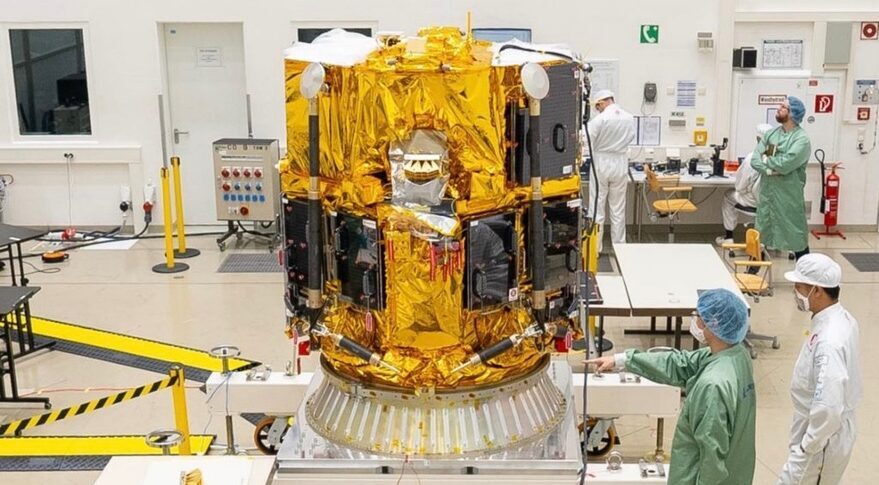
The HAKUTO-R M1 lander during final testing in Germany. The spacecraft is now scheduled to launch no earlier than Nov. 22. Credit: ispace
WASHINGTON — Japanese lunar lander developer ispace is in the final phases of preparations for the launch of its first lunar lander mission, a flight that will include a NASA lunar cubesat mission as a secondary payload.
Tokyo-based ispace announced Oct. 31 that its HAKUTO-R M1 lander had arrived at Cape Canaveral, Florida, for final preparations for launch on a SpaceX Falcon 9. The spacecraft arrived by plane from Germany, where it had completed final assembly and testing.
The company previously targeted a launch between Nov. 9 and 15, but said in the announcement that it had postponed the launch to no earlier than Nov. 22. The new launch date “allows for best preparation for the mission when considering the fuel-loading schedule for the lander and launch date availability,” the company stated.
The M1 lander is carrying government and commercial payloads, including Rashid, a small lunar rover developed by the Mohammed bin Rashid Space Centre in the United Arab Emirates, and a “transformable lunar robot” the size of a baseball from Japan’s space agency JAXA. Other payloads include cameras and technology demonstrations.
As the name suggests, the M1 lander is the first in a series planned by ispace. The next mission, M2, is tentatively scheduled for launch in 2024.
The Falcon 9 launch of the ispace lander will carry a NASA cubesat as a secondary payload. NASA’s Jet Propulsion Laboratory said Oct. 28 that its Lunar Flashlight cubesat was being prepared to launch on that flight. The 6U cubesat will go into a highly elliptical orbit that will take it within 15 kilometers of the surface over the south pole, allowing it shine lasers into the craters there to look for evidence of water ice.
Lunar Flashlight was originally slated to fly with a dozen other cubesats as secondary payloads on Artemis 1, the first launch of the Space Launch System. However, problems with the propulsion system on the cubesat prevented it from being completed in time to meet a delivery deadline last fall for being integrated on the rocket.
Last spring, NASA said it planned to fly Lunar Flashlight instead as a secondary payload on another Falcon 9 launching IM-1, the first lunar lander mission by Intuitive Machines, carrying a set of payloads for NASA’s Commercial Lunar Payload Services program as well as commercial customers. That mission, once set to launch by the end of this year, has now slipped to March 2023.
In a statement to SpaceNews Oct. 31, NASA’s Small Spacecraft Technology Program said that it worked with a launch broker “who placed the spacecraft on the earliest possible suitable launch opportunity based on the launch trajectory.” When launch schedules changed in the fall, the ispace mission became that earliest launch opportunity.
Despite missing its original ride, Lunar Flashlight won’t be far behind the cubesats it was to fly with on Artemis 1. NASA is planning a launch of the SLS on that mission no earlier than Nov. 14.
Quelle: SN
----
Update: 18.11.2022
.
ispace Announces Mission 1 Launch Date
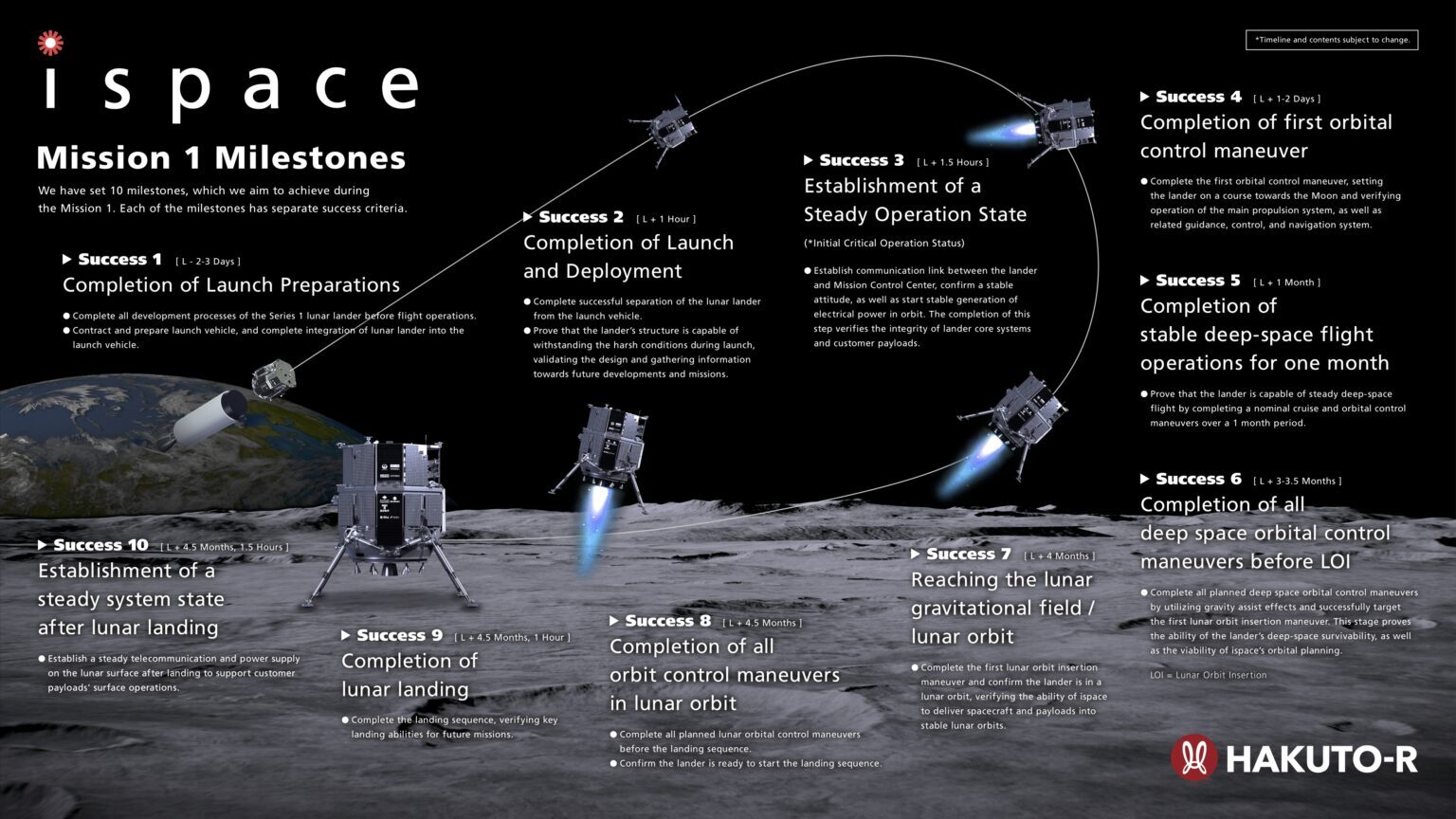
Scheduled to launch on November 28, 2022, on a SpaceX Falcon 9 rocket
TOKYO—November 17, 2022— ispace, inc., a global lunar exploration company, plans to launch its Mission 1 (M1) lunar lander, part of the HAKUTO-R lunar exploration program, on Nov. 28, 2022, at the earliest, on a SpaceX Falcon 9 rocket from Cape Canaveral Space Force Station, Founder & CEO Takeshi Hakamada announced today at a press conference in Tokyo.
In addition to the launch date announcement, ispace unveiled 10 mission milestones, the landing site for its M1 mission, its seventh payload and the HAKUTO-R countdown clock at the press conference held outside of the company’s mission control center.
HAKUTO-R Mission 1 Launch Schedule
Time: 3:46 a.m., Monday, November 28, 2022 (U.S. Eastern Standard Time)
5:46 p.m., Monday, November 28, 2022 (Japan Standard Time)
Launch site: Space Launch Complex 40, Cape Canaveral Space Force Station, Florida, U.S.
*The above dates and times are subject to change depending on weather and other conditions.
“Our first mission will lay the groundwork for unleashing the moon’s potential and transforming it into a robust and vibrant economic system,” said Takeshi Hakamada, Founder and CEO of ispace. “We look forward to contributing to NASA’s Artemis program as a commercial lunar transportation service and pioneering the development of future industries and connecting the Earth to the Moon and beyond.”
During the event, ispace released Mission Milestones for its inaugural mission at the press conference held outside of its Mission Control Center in Nihonbashi, Tokyo.
M1 is considered a technology demonstration with an overall objective to validate the lander’s design and technology, as well as ispace’s business model to provide reliable lunar transportation and data services. For M1, ispace has set 10 milestones between launch and landing, and aims to achieve the success criteria established for each of these milestones. Recognizing the possibility of an anomaly during the mission, the results will be weighed and evaluated against the criteria and incorporated into future missions, supporting the company’s evolution of sustainable technology and its business models.
The accumulated data and experience from M1 will be incorporated into future designs and operations to enhance missions, beginning immediately with Mission 2, which is already in the development stage and is scheduled for 2024. As a private corporation, ispace’s business model calls for continuous, short cycles of technology development to increase capability and reliability in order to usher in an era of full-scale commercialization of the space industry. This model will incorporate knowledge from both missions into Mission 3 (M3) planned for 2025. M3 will contribute to NASA’s Artemis Program under its Commercial Lunar Payload Services program with a mature lander design and operations based on data and experience acquired during the first two missions.
Mission 1 Landing Site Announcement
Along with the launch date and milestones, ispace announced its primary landing site, the Atlas Crater, located at 47.5°N, 44.4°E, on the southeastern outer edge of Mare Frigoris (“Sea of Cold”), chosen to maintain flexibility during operations. The primary landing site was chosen along with multiple contingencies, which may be used depending on variables that occur during transit. The site meets the technical specifications of the lander technology demonstration mission, the scientific exploration objectives for the MBRSC mission, as well as the mission requirements of our other customers. Careful consideration of the target site criteria included continuous sun-illumination duration and communication visibility from the Earth. Alternative landing targets include Lacus Somniorum, Sinus Iridium and Oceanus Procellarum, among others. Landing is currently expected to take place around the end of April 2023.
Final Mission 1 Payload Revealed
During the press conference, ispace announced its final payload, a music disc containing the song “SORATO” played by Japanese rock band Sakanaction. The song was originally written in 2018 in support of “Team HAKUTO,” a participant in the Google Lunar XPRIZE and precursor to ispace. Sorato was also the name of the lunar rover developed by Team HAKUTO during the Google Lunar XPRIZE, which closed without awarding prize money.
“We couldn’t make it happen back then, but I was surprised to hear just 4 years after releasing the song we had this opportunity,” said Ichiro Yamaguchi, guitarist, vocalist and founding member of the band. “I am looking forward to the launch. I know that there will moments where you will face difficulties due to various pressures and expectations, but we, including myself, will continue to support you. We hope that you will not be defeated and will face the challenge.”
Sakanaction was founded in 2005 and describes itself as a rock band with folksy melodies and a club music approach. They have released seven albums, regularly sell out arena tours and rank at the top of the charts in Japan.

Mission 1 Countdown Clock
In collaboration with ispace corporate partner CITIZEN, the HAKUTO-R M1 Countdown clock was unveiled in front of the HAKUTO-R Mission Control Center (MCC).
The countdown clock’s time system, which can receive GPS satellite and keep accurate time, is connected to the time server of CITIZEN. It is also the same time system that is used in the MCC, which plays an important role in keeping time during the launch and mission.
About ispace, inc.
ispace, a global lunar resource development company with the vision, “Expand our Planet. Expand our Future.”, specializes in designing and building lunar landers and rovers. ispace aims to extend the sphere of human life into space and create a sustainable world by providing high-frequency, low-cost transportation services to the Moon. The company has offices in Japan, Luxembourg, and the United States with more than 200 employees worldwide. ispace technologies U.S., inc. is part of a team led by Draper, which was awarded a NASA Commercial Lunar Payload Services (CLPS) Program contract to land on the far side of the Moon by 2025 (as of November 2022). Both ispace, and ispace EUROPE S.A. (ispace EU) were awarded contracts to collect and transfer ownership of lunar regolith to NASA, and ispace EU was selected by ESA to be part of the Science Team for PROSPECT, a program which seeks to extract water on the Moon.
Established in 2010, ispace operated “HAKUTO” which was one of five finalist teams in the Google Lunar XPRIZE race. The company’s first mission as part of its HAKUTO-R lunar exploration program is currently planned for as early as November 2022 and is expected to launch from the United States on a SpaceX Falcon 9 rocket. ispace has also launched a lunar data business concept to support new customers as a gateway to conduct business on the Moon.
Quelle: ispace
----
Update: 20.11.2022
.
Japanese lunar lander slated to launch Nov. 28 at the earliest
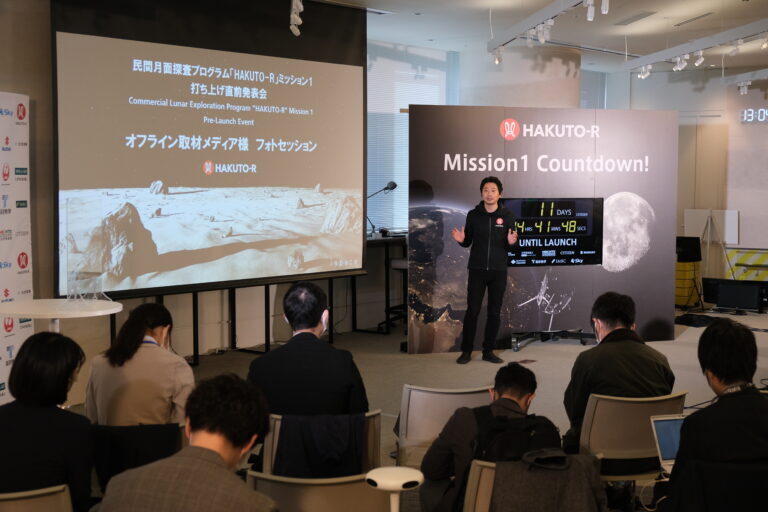
Takeshi Hakamada, ispace's founder and CEO, speaks at a press conference held in Tokyo, Japan Nov. 17. Credit: ispace
TAMPA, Fla. — Japan’s ispace expects SpaceX to launch its lunar lander Nov. 28 at the earliest for a mission to the moon’s surface roughly five months later.
The company said Nov. 17 its HAKUTO-R M1 lander is slated to fly on a Falcon 9 at 3:46 a.m Eastern from the Space Launch Complex 40 at Cape Canaveral Space Force Station, Florida, subject to weather and other conditions.
This would put M1 on track to land on the moon by around the end of April, when it would deliver lunar payloads for the UAE-based Mohammed bin Rashid Space Centre, the Japanese space agency JAXA and commercial firms in Japan and Canada.
The company also announced Nov. 17 it has chosen the Atlas Crater at Mare Frigoris to the far north of the moon as its primary landing site.
Landing on the southeastern outer edge of Mare Frigoris — one of the moon’s dark basaltic plains — would provide M1 with continuous sunlight for power and visibility to Earth for communications, ispace said.
Alternative landing targets include Lacus Somniorum, Sinus Iridium and Oceanus Procellarum.
M1’s planned low-energy trajectory to the moon required the lander to have the Falcon 9 practically to itself.
After separating from the rocket about an hour after lift-off, it will take the lander about four months to reach lunar orbit via a series of propulsive maneuvers.
Once in lunar orbit it will then take about two weeks for ispace to perform the maneuvers and checks it needs to initiate a soft landing sequence it expects to take about an hour to complete.
With its legs extended, M1 stands at 2.3 meters tall and 2.6 meters wide, with a dry mass of about 340 kilograms.

Joining M1 on the Falcon 9 as a secondary payload is NASA’s Lunar Flashlight spacecraft, which is the size of six cubesats, designed to hunt for evidence of water ice in craters around the moon’s south pole from a highly elliptical orbit.
M1 is the first in a series of landers ispace plans to send to the lunar surface. Its next mission has been penciled in for 2024.
The 12-year-old firm, which had 214 employees as of October, said it has insured its inaugural mission with coverage from Mitsui Sumitomo Insurance, a Tokyo-based firm that started working with ispace in 2019.
According to ispace’s Nov. 17 news release, the policy “covers from the launch of the rocket carrying the lunar lander, through the establishment of communication and data transmissions between the lander and mission control following landing on the lunar surface.”
Global insurance broker Marsh supported the policy, which only covers the lander, not its payloads.
Quelle: SN
----
Update: 21.11.2022
.
SpaceX to launch Japanese moon lander, UAE rover on Nov. 28

